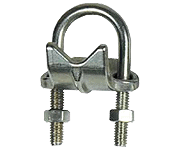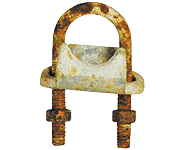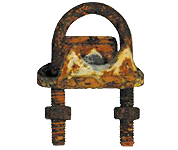Pulp & Paper
STAINLESS STEEL CONDUIT & FITTINGS FOR PULP & PAPER MILLS
Corrosive Agents
Pulp & paper processing often go hand-in-hand as pulp production is one of the key parts of the paper making process. Pulp mills may be separate from paper mills, or the two may operate together in an integrated mill. Both processes occur in very corrosive environments. There are many different ways of processing pulp. They can be characterized as mechanical, chemical, or sometimes, a combination of both. Chemical processing is most often used. As it is also the process that involves more corrosive agents, we take a look at the risk of corrosion during chemical processing.
There are two types of chemical processes: kraft (sulfate) and sulfite. Kraft processing is the most common and is used worldwide. This process involves cooking (i.e., digesting) wood chips with sodium sulfide (Na2S) and sodium hydroxide (NaOH), an alkaline mixture known as “white liquor.” During cooking, the white liquor turns dark and is subsequently known as “black liquor.” After digestion, the black liquor is separated from the cooked pulp, known as “brown stock,” and burned with sodium sulfate as part of a chemical recovery to obtain sodium carbonate. This chemical recovery process also generates electricity to run the plant. After the chemical recovery process, the pulp is washed and screened before bleaching. Bleaching involves the use of chemicals such as sodium hypochlorite, chlorine dioxide, caustic soda, peroxide, etc. Sodium hydroxide or other strong alkalis may be used in the bleaching process to further dissolve lignin and reduce the potential for future yellowing of the paper.
The sulfite process follows similar steps, but uses a different chemical mixture made from sulfur dioxide (SO2) dissolved in water as well as SO2 as a bisulfate. This chemical mixture is more flexible than the sulfate mixture and can range from acidic to basic depending on the needs of the wood chips being processed.
In addition to the process chemicals found in paper making, other corrosion catalysts such as heat, moisture, evaporation, and water are also present. The digestion of wood chips is typically performed at temperatures around 150°C – 180°C. The chemical recovery process, including evaporation and combustion of the black liquor, and electricity production using steam, occur at high temperatures as well. The elevated temperatures associated with these steps can increase corrosion rates and necessitate the use of materials with good, high temperature properties.
Other Factors
Reinstallation in these environments may be considered hazardous to installers given the amount of chemicals used throughout the pulp & paper making process.
Stainless Steel Solutions
Stainless steel offers superior corrosion resistance compared to the formerly popular PVC-coated, zinc-plated, galvanized, and carbon steels — materials that have low initial overhead expenses but costly maintenance and replacement fees. The long service life of stainless steel — 10-20 times longer than carbon steel or iron in the same working environment — makes it the best overall choice to defend against the harmful effects of corrosion.
Note: Results after 4-week salt spray test.
Additionally, austenitic grades (Type 304 and Type 316 SS) have stable crystalline structures that result in good mechanical properties, including strength and ductility, at both high and low temperature extremes.
Not only does stainless steel offer corrosion resistance and durability, it has an aesthetic appeal of a bright polished finish and benefits the environment as it is able to be re-melted and reused, making it recyclable.
The success of your application can hinge on material selection. Gibson Stainless manufactures stainless steel products that address corrosion challenges while offering easy installation and minimal maintenance and repair.
To learn more about our stainless steel selection, visit our catalog or contact us today.




